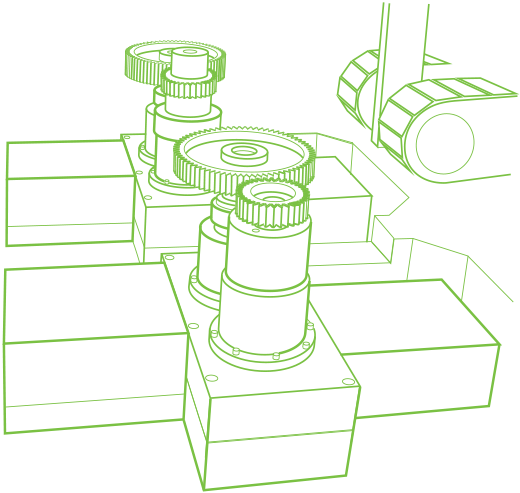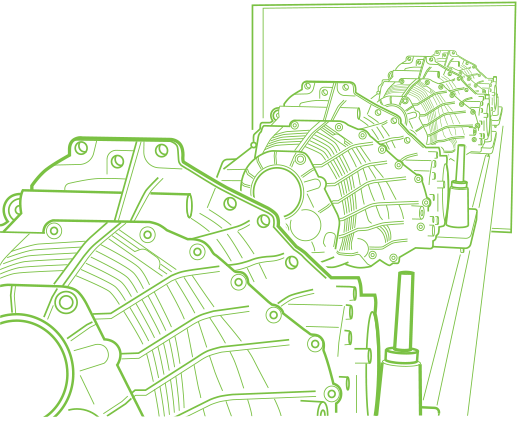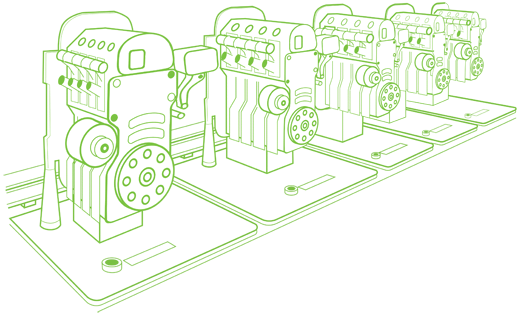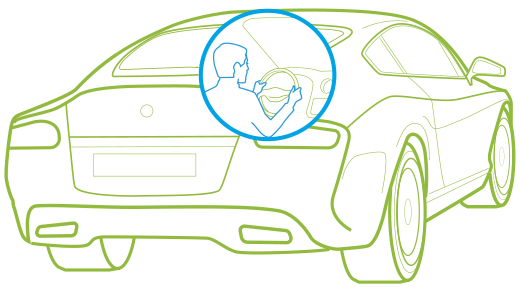
Production Line Testing for Automotive
Incorporating acoustic quality analysis and vibration production line testing as an integral part of the manufacturing of automotive components, maximizes production line yield and cost effectiveness and ensures the quality and customer acceptance of the entire powertrain.
An integrated approach to acoustic quality analysis and vibration testing in the production process enables rapid, reliable and thorough NVH (noise, vibration and harshness) testing for all kinds of mechanical assemblies.
Powertrain testing system
When developing a comprehensive test system for powertrain production lines, you need to cover everything from end-of-line pass-fail gear testing to end-of-line transmission testing, to end-of-line engine testing. The system should include in-car testing of a finished product for correlation with test-stand data, as well. A complete system that logs data for each stage in the production line must provide traceable data that identifies the root causes of unwanted noise, vibration or durability issues and enables their elimination or mitigation.
This ultimately results in greater production line yield and cost effectiveness.
The DISCOM NVH Analysis system performs end-of-line testing on test benches that simulate driving conditions. Testing is optimized for the short cycle times (time between the start of each test) typical for quality assurance (QA) in industrial production.
Configurations include:
- Gear testing
- Gearbox testing, including manual, automatic and dual-clutch transmission designs as well as axles and transfer cases
- Tapered roller bearing analysis
- Analysis of combustion engines - hot and cold test
- Analysis of electric motors, e-drivers and hybrid transmissions
- Correlation between test stand and in-vehicle performance of completed assemblies
Gear manufacturing is high volume, and it is relatively inexpensive to scrap faulty components before they make it into bigger assemblies.
The ideal test system for this scenario is an automated pass-fail test that sorts the gears to either continue to the next production line or be kicked back to be reworked or melted down and remade. To cut down on future failures, logging data concerning the nature of the failure can help to identify patterns and trends and refine predictions based on tool-wear patterns.
Ultimately, the goal is to minimize failures at the test stand and on the production line.
DISCOM Noise Analysis for Gear Test
DISCOM Noise Analysis for Gear Test is an end-of-line test system for gears. This system can perform single- or double-flank testing – depending on the production requirements – to identify nicks, surface waves/ripples and geometry problems.
DISCOM Noise Analysis for Gear Test is part of the DISCOM NVH Analysis system and comprises transducers, data acquisition hardware and PC software for processing, analysis and data storage. The system is often built for larger test stands, where a range of non-NVH parameters are tested as well. Measurement data is stored in a database and is available for analysis and traceability.
Related products
Transmissions are complicated assemblies made up of many rotating and intermeshing parts. They are too expensive to produce to be scrapped after failure, both in material cost and time. Testing should provide detailed information about the problem and its source, so the failure can be repaired.
Because of the many moving parts in transmissions, the test system must be capable of isolating individual components in order to pinpoint the source of the problem. Once the problem is identified and fixed, the root cause of that problem needs to be traced and, ideally, eliminated.
DISCOM Noise Analysis
DISCOM Noise Analysis for transmissions, gearboxes and axles is a QA system with a short measurement cycle for acoustic end-of-line test for transmissions, gearboxes and axles.
The system integrates analysis methods that concentrate on periodic signals (order synchronous resampling), which allows the identification of individual parts. In this way, internal noise and vibration sources can be located and analyzed to identify the nature of the problem. All the data is stored in a database that, along with analysis, can be used to continuously refine test parameters for the elimination of root causes and identification and prediction of trends.
As part of DISCOM NVH Analysis, DISCOM Noise Analysis for transmissions, gearboxes and axles is comprised of data acquisition hardware, databases for storing relevant information and software analysis tools for identifying and mitigating problems.
Related products
Related infomration
In engine production, where missed faults can incur considerable cost, loss of durability and a drastic impact on customer acceptance, simple pass/fail results will not suffice. The test system must be capable of isolating individual parts in order to pinpoint the source of the problem so that the failure can be repaired.
Any data that leads to the elimination of a root cause of the failed component can save time, money and reputation.
DISCOM Noise Analysis for Engine Test
DISCOM Noise Analysis for Engine Test is an acoustic quality, end-of-line test for engines. It is an acoustic noise analysis QA system with a short measurement cycle. As part of the DISCOM NVH Analysis system, it consists of data acquisition hardware, software analysis tools for identifying and mitigating problems and databases for storing data and analyses.
The system integrates various analysis methods that concentrate on periodic signals (order synchronous resampling), which allows the identification of individual engine parts.This enables internal noise and vibration sources to be located and analyzed to identify the nature of the problem. Data is stored in a database that can be used for analysis and to refine test parameters, on an ongoing basis, for the elimination of root causes and identification and prediction of trends.
Related products
After the finished component or assembly for a vehicle leaves the production line, it should be tested in a completed vehicle, where test stand data can be correlated with actual vehicle interior noise.
Certain vehicle speeds and torques are more susceptible to gear, transmission and engine noise, and there are a multitude of transfer paths from engines and transmissions to the cabin.
An in-vehicle test can aid in the identification of frequency bands that may be masked or accentuated via a transfer path.
Once problem areas are identified, the relevant tolerance parameters at the gear, transmission or engine test stands can be adjusted to ensure that passing components and assemblies leaving the test stands will also pass testing in the finished product.
DISCOM Mobile
DISCOM Mobile is a universal measurement, analysis and assessment system for portable acoustic measurements. The system is comprised of four microphones, one accelerometer, a front-end data acquisition subsystem and a laptop PC with the DISCOM Mobile software installed for data analysis.
Once the data has been acquired, it is processed and ready for comparison with test stand data, which enables the test-stand tolerance limit parameters to be refined, improving the end-of-line test results
Related products

Wenden Sie sich noch heute an Ihre Brüel & Kjær-Vertretung vor Ort!




